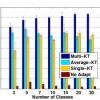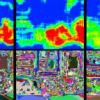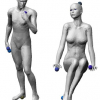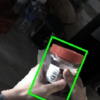116
Voted
CVPR
2010
IEEE
15 years 9 months ago
2010
IEEE
Learning object categories from small samples is a challenging problem, where machine learning tools can in general provide very few guarantees. Exploiting prior knowledge may be ...
143
click to vote
CVPR
2010
IEEE
15 years 9 months ago
2010
IEEE
Time-varying spatial patterns are common, but few computational tools exist for discovering and tracking multiple, sometimes overlapping, spatial structures of targets. We propose...
110
click to vote
CVPR
2010
IEEE
15 years 9 months ago
2010
IEEE
A central problem in the analysis of motion capture (Mo-
Cap) data is how to decompose motion sequences into primitives.
Ideally, a description in terms of primitives should
fac...
CVPR
2010
IEEE
15 years 9 months ago
2010
IEEE
We propose an efficient method, built on the popular Bag
of Features approach, that obtains robust multiclass pixellevel
object segmentation of an image in less than 500ms,
with...
CVPR
2010
IEEE
15 years 9 months ago
2010
IEEE
The α-expansion algorithm [4] has had a significant impact in computer vision due to its generality, effectiveness, and speed. Thus far it can only minimize energies that involv...
CVPR
2010
IEEE
15 years 9 months ago
2010
IEEE
Humans constantly evaluate the personalities of other people using their faces. Facial trait judgments have been studied in the psychological field, and have been determined to i...
119
click to vote
CVPR
2010
IEEE
15 years 9 months ago
2010
IEEE
The dynamic texture (DT) is a probabilistic generative model, defined over space and time, that represents a video as the output of a linear dynamical system (LDS). The DT model ...
104
click to vote
CVPR
2010
IEEE
15 years 9 months ago
2010
IEEE
How can knowing about some categories help us to discover new ones in unlabeled images? Unsupervised visual category discovery is useful to mine for recurring objects without huma...
120
click to vote
CVPR
2010
IEEE
15 years 9 months ago
2010
IEEE
We propose a posture invariant surface descriptor for triangular meshes. Using intrinsic geometry, the surface is first transformed into a representation that is independent of t...
119
Voted
CVPR
2010
IEEE
15 years 9 months ago
2010
IEEE
Identifying handled objects, i.e. objects being manipulated by a user, is essential for recognizing the person’s activities. An egocentric camera as worn on the body enjoys many...




